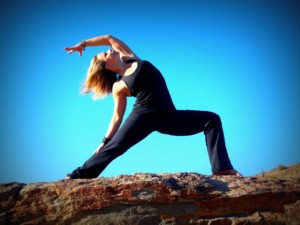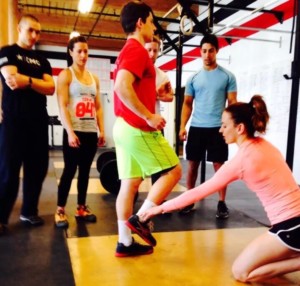By Rachael Colacino, PSE Coach
One of the first lessons children learn is to identify shapes. We learn squares, rectangles, circles, and call them out to fit them into the puzzle of our small, developing worlds. As adults, shape identification moves to environment. Buildings, rooms, furniture, backyards. What will fit where, directions for moving around and between shapes in our world, the size and shape of our homes and workplaces and where we socialize.
Shapes manifest in us, in our bodies and in our movement. We are flexible machines capable of shifting patterns through action and within environment. As athletes we learn movement techniques and begin to realize the potential for the shapes our bodies make. Beware though. Technique is a siren, whose song can lull you into thinking there’s one perfect way. While technique itself does not change from person to person, the shape one athlete assumes is not necessarily the same another will take on.
How you move your body in and out of shapes communicates who you are and what you think your relationship is to the world and people around you. So then if there’s power inherent in those shapes, there’s also strength too.
 Nature stores power in our shapes and these relay quiet power externally and internally. Let’s take yoga’s relatively simple Warrior Pose for example. It’s a strong shape, one leg back, one leg forward, hips facing forward, and chest lifted. Physically the pose fortifies feet, hamstrings, quadriceps and glutes, as well as strengthens the core. Mentally, the pose also relays power: the stance can increase inner strength and courage, while allowing you to open up to yourself and others.
Nature stores power in our shapes and these relay quiet power externally and internally. Let’s take yoga’s relatively simple Warrior Pose for example. It’s a strong shape, one leg back, one leg forward, hips facing forward, and chest lifted. Physically the pose fortifies feet, hamstrings, quadriceps and glutes, as well as strengthens the core. Mentally, the pose also relays power: the stance can increase inner strength and courage, while allowing you to open up to yourself and others.
For endurance athletes, who move their bodies in and out of shapes over the course of several hours, those shapes communicate to the world about your preparation and your performance. Strong foundational shapes not only keep you in a strong and efficient position, but can be a competitive advantage. Imagine the psychological damage to your fatigued opponent who notices your relaxed facial muscles, your open shoulders and your upright posture.
 Are the shapes your body makes foundationally strong or weak? When you stand up under load, are you squared, all angles and rigid like the mighty rectangle? Or are you circular, round and soft? And what happens to your viewpoint of those shapes as you move over distances? Are you moving forward effortlessly, like the fluid circle? Or are you jerky and halted, like a rectangle rolling down a hill?
Are the shapes your body makes foundationally strong or weak? When you stand up under load, are you squared, all angles and rigid like the mighty rectangle? Or are you circular, round and soft? And what happens to your viewpoint of those shapes as you move over distances? Are you moving forward effortlessly, like the fluid circle? Or are you jerky and halted, like a rectangle rolling down a hill?
Train for ideal shapes. Your endurance event should finish the same way you started it. You cannot outrun or out-train bad technique. In the end it all comes down to how well you can hold the shape (or position) in anything we do. So no matter how long, hard, or heavy, once the standard shape breaks so do we.

No Comments